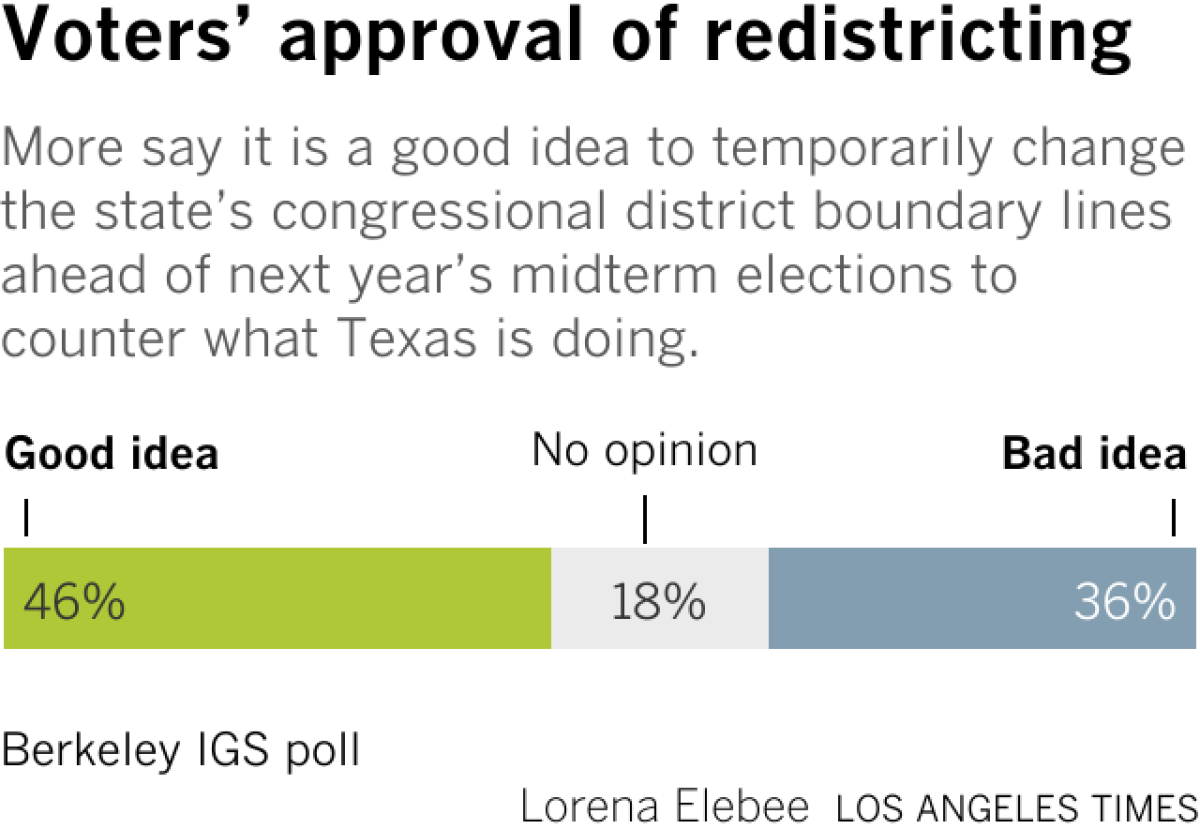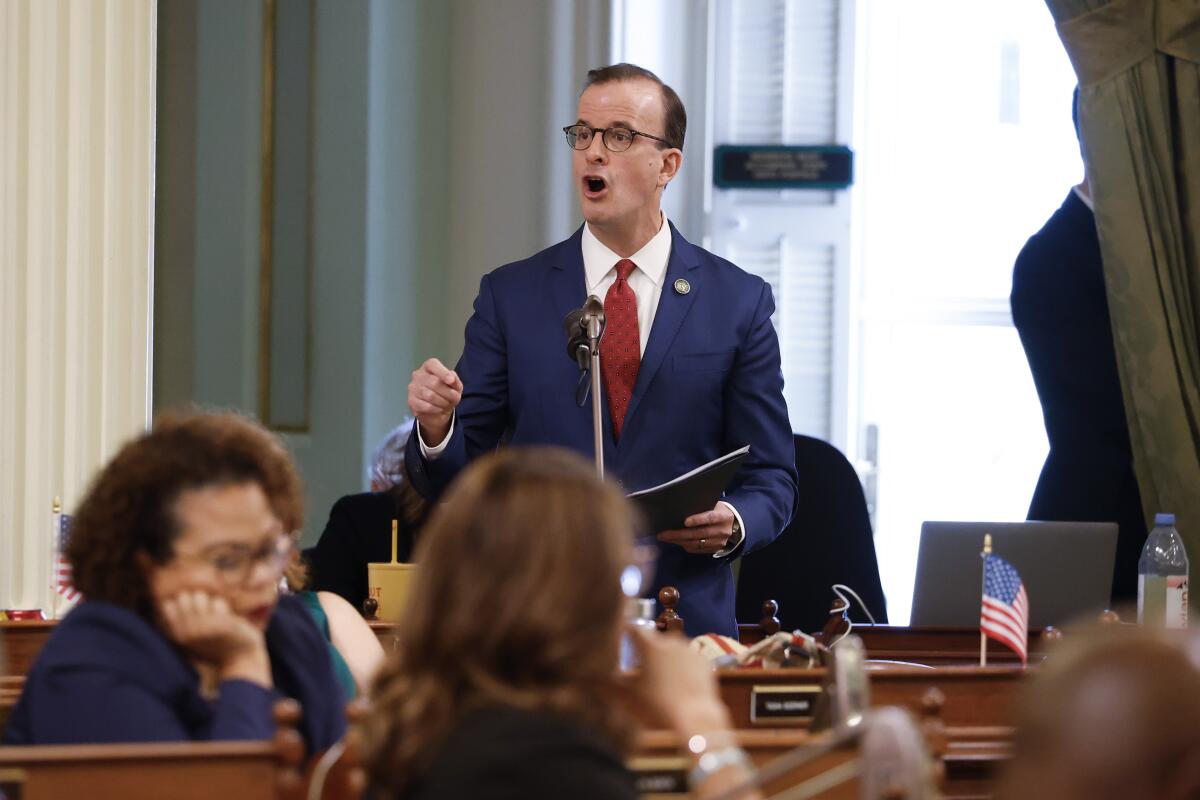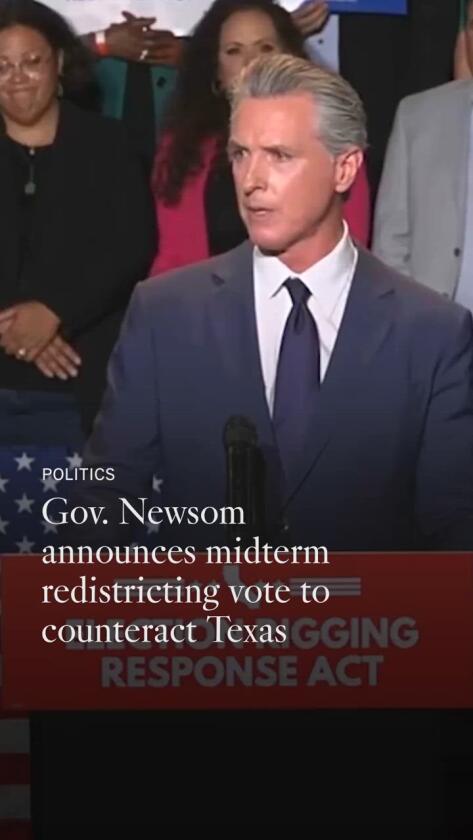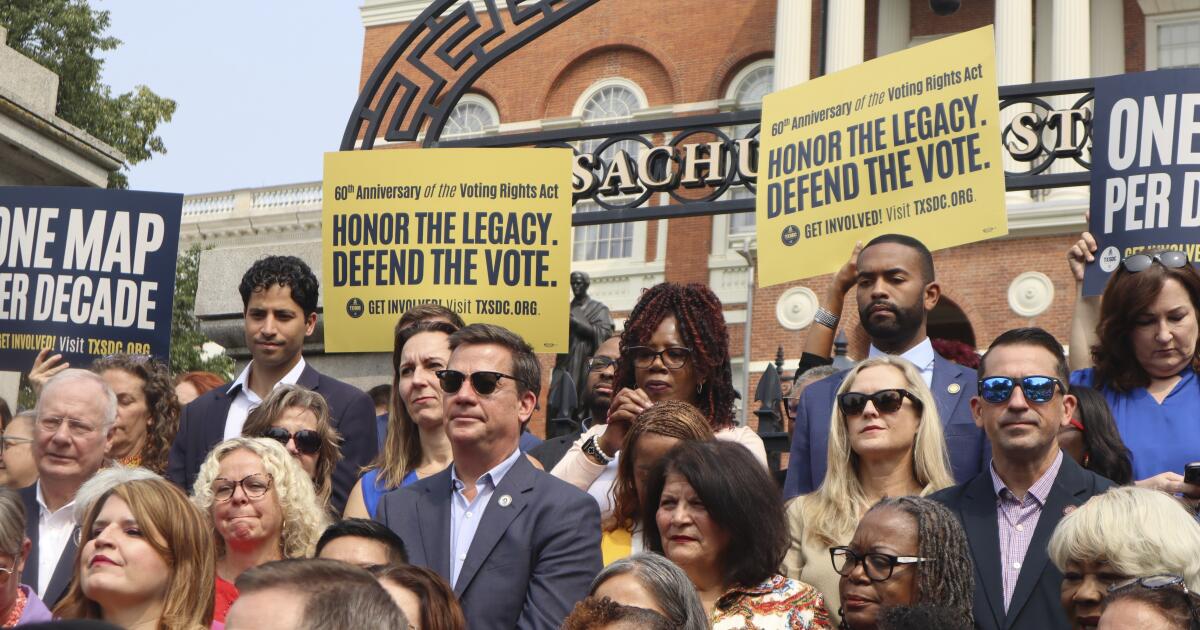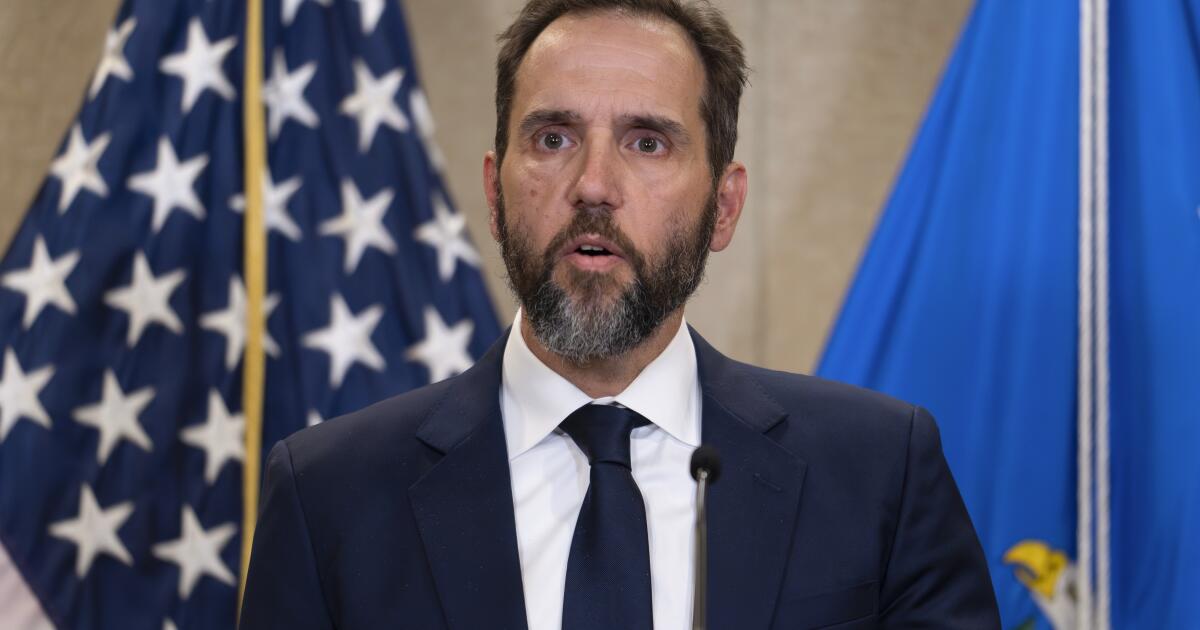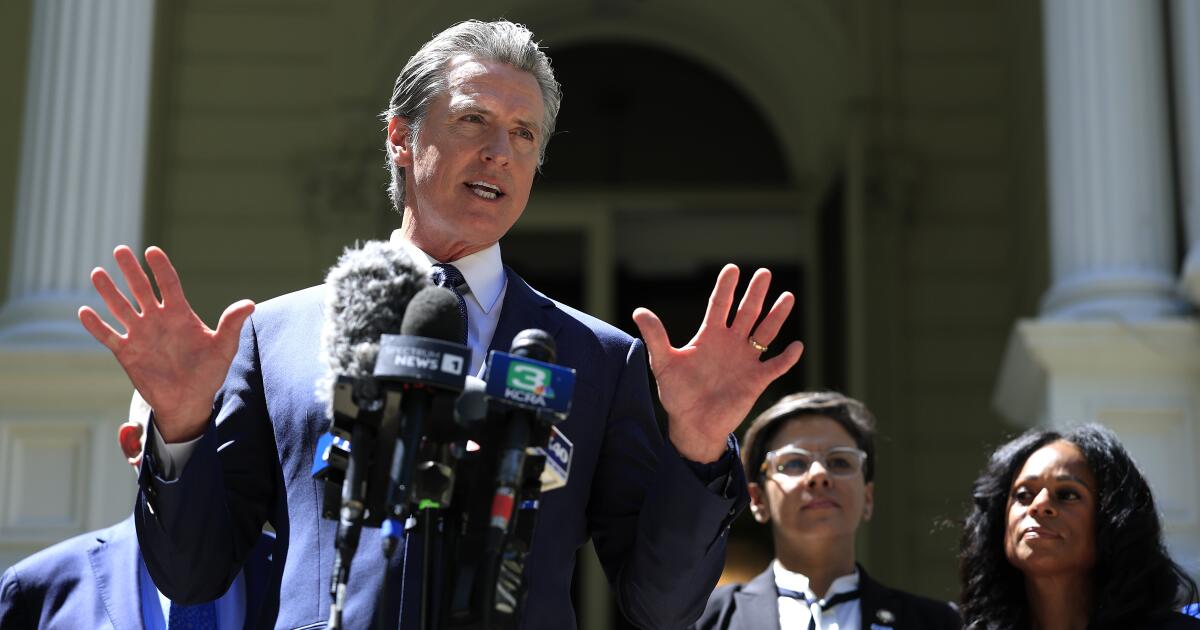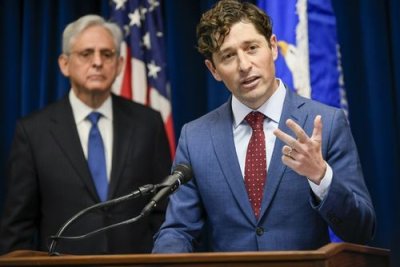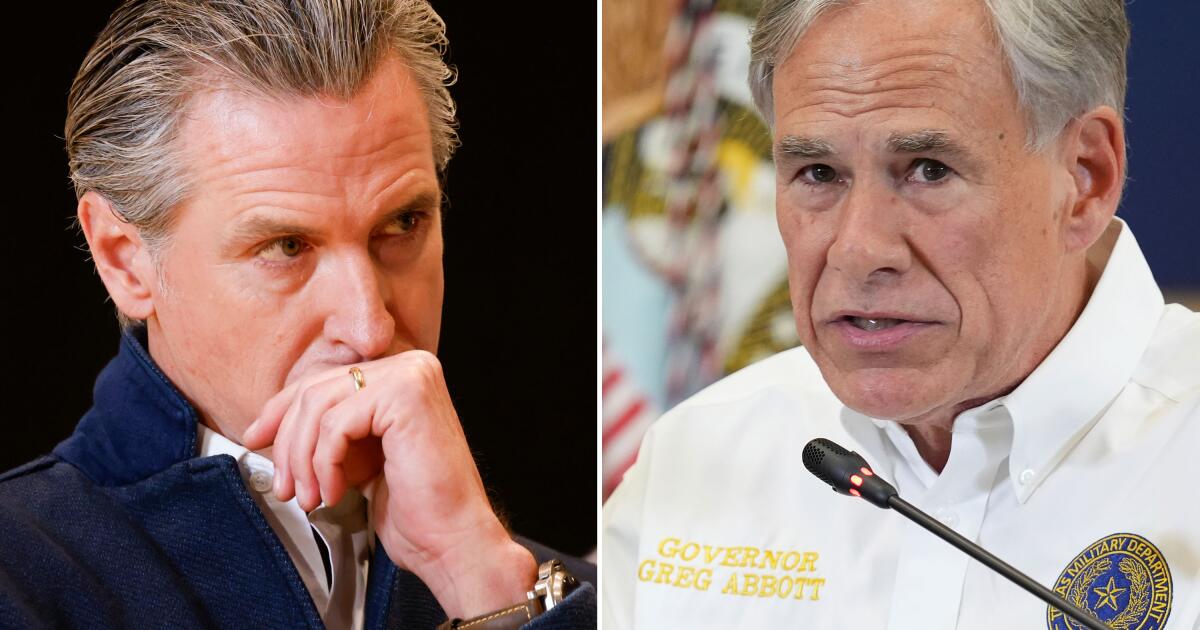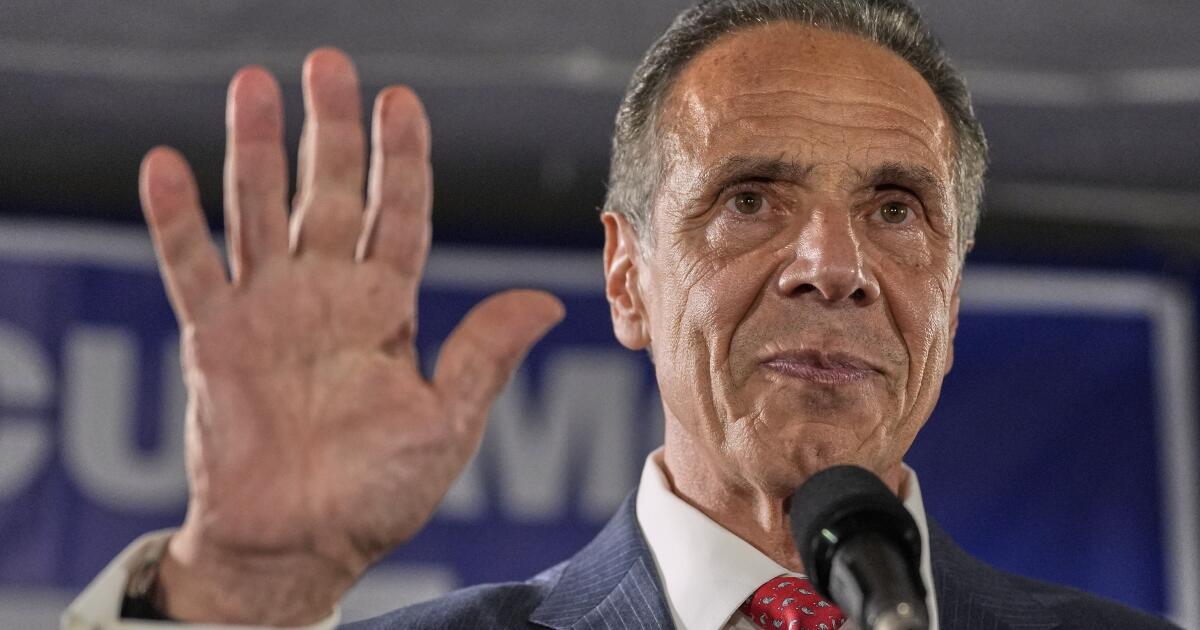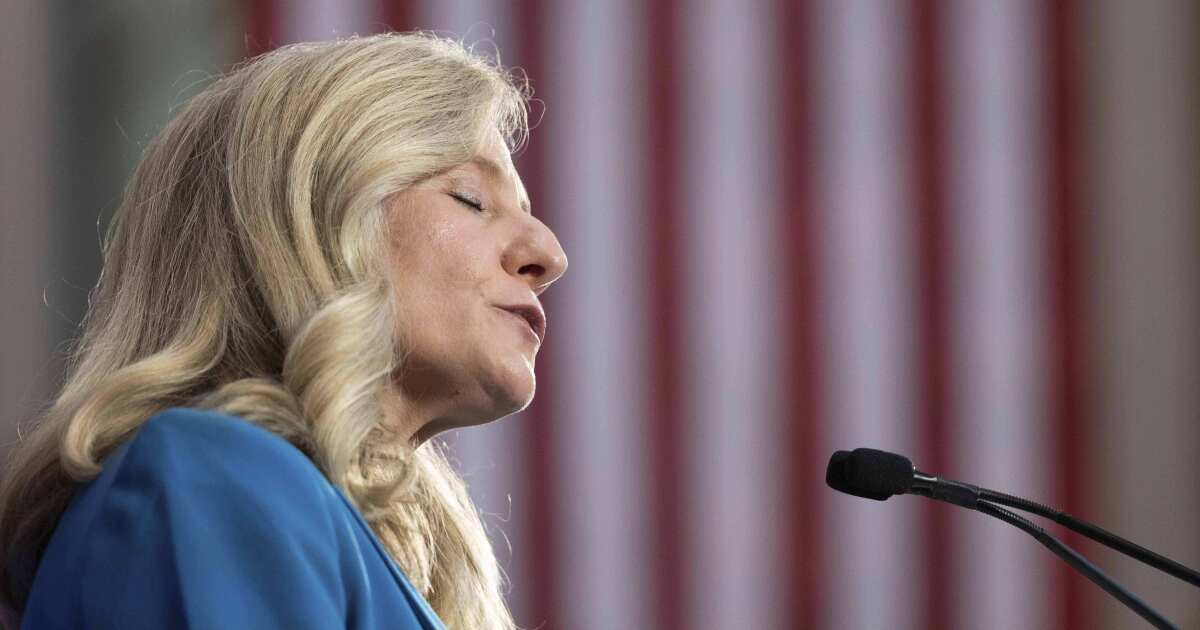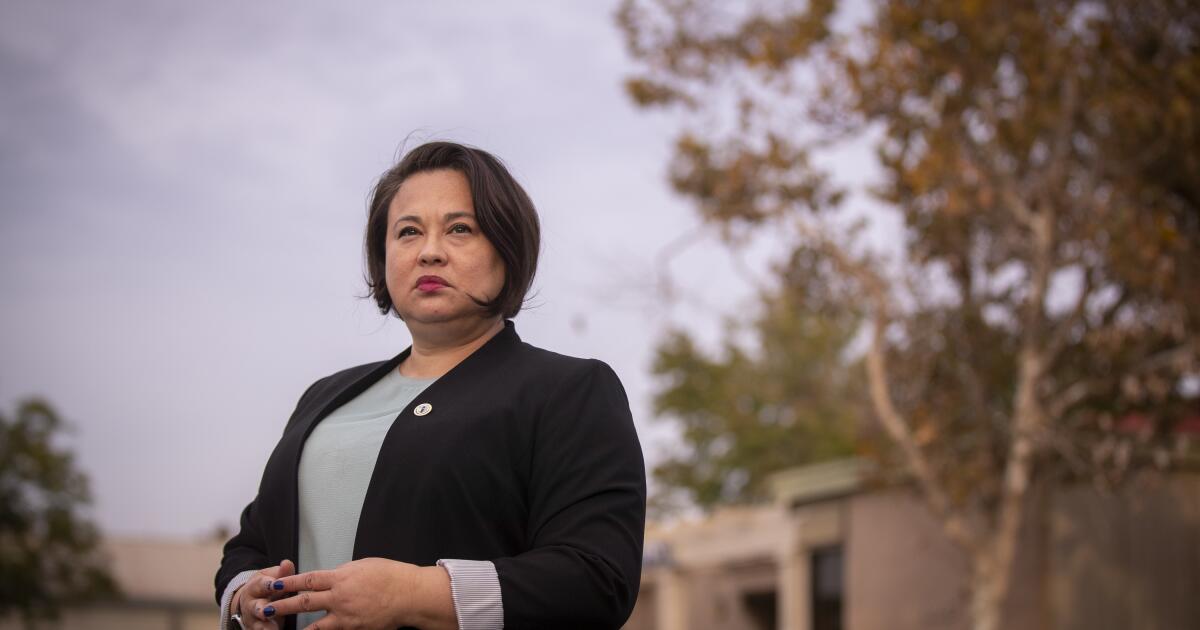California voters support Newsom’s redistricting plan, poll finds
SACRAMENTO — Gov. Gavin Newsom’s plan to temporarily redraw California’s congressional districts has more support than opposition — but with many voters undecided, the measure’s prospects remain uncertain, a new poll found.
One thing, however, has become clear: Newsom’s standing with voters appears tethered to the fate of his high-stakes redistricting gamble.
The UC Berkeley Institute of Governmental Studies poll, conducted for the Los Angeles Times, asked registered voters about the Newsom-backed redistricting push favoring California Democrats, which serves as a counterattack to President Trump and Texas Republicans reworking election maps to their advantage.
When voters were asked whether they agree with California’s redistricting maneuver, 46% said it was a good idea, while 36% said it was a bad idea. Slightly more, 48%, said they would vote in favor of the temporary gerrymandering efforts if it appeared on the statewide special election ballot in November. Nearly a third said they would vote no, while 20% said they were undecided.
“That’s not bad news,” said Mark DiCamillo, director of the Berkeley IGS Poll. “It could be better. With ballot measures, you’d like to be comfortably above 50% because you got to get people to vote yes and when people are undecided or don’t know enough about initiatives, they tend to vote no just because it’s the safer vote.”
Among voters who regularly cast ballots in statewide elections, overall support for redistricting jumped to 55%, compared with 34% opposed.
That, DiCamillo said, is significant.
“If I were to pick one subgroup where you would want to have an advantage, it would be that one,” he said.
The high-stakes fight over political boundaries could shape control of the U.S. House, where Republicans currently hold a narrow majority. Newsom and Democratic leaders say California must match Texas’ partisan mapmaking move to preserve balance in Congress. Texas’ plan creates five new Republican-leaning seats that could secure the GOP’s majority in the House. California’s efforts are an attempt to cancel those gains — at least temporarily. The new maps would be in place for the 2026, 2028 and 2030 congressional elections.
However, critics say that the plan undermines the state’s voter-approved independent redistricting commission and that one power grab doesn’t negate another.
-
Share via
Not surprisingly, the partisan fight over election maps elicited deeply partisan results in the poll. Nearly 7 in 10 Democratic voters said they would support the redistricting measure , while Republicans overwhelmingly (72%) panned the plan.
Former President Obama endorsed it, while California’s former Gov. Arnold Schwarzenegger, a moderate Republican, told the New York Times he would fight it. The effort faced opposition this week in Sacramento during legislative hearings, where Republicans blasted it as a partisan game-playing. California Republicans attempted to stall the process by filing an emergency petition at the state Supreme Court, arguing that Democrats violated the California Constitution by rushing the proposal through the Legislature. The high court rejected the legal challenge Wednesday.
The effort has by all accounts moved swiftly, with newly reworked maps released late last week and, by Monday, lawmakers introduced legislation to put it before voters. Lawmakers approved those bills Thursday, which secures the measure’s place on the ballot in November.
Newsom, who has become the face of California’s redistricting effort, has seen his once-stagnant approval ratings tick upward as he takes on Trump and Republican leaders. Beyond the high-profile push to reshape the state’s congressional districts, his office has drawn recent attention with a social media campaign that mimics Trump’s own idiosyncratic posts.
More voters now approve than disapprove of the governor’s job performance (51% to 43%), which represented a turnaround from April, when voters were split at 46% on each side. The poll, which surveyed 4,950 registered voters online in English and Spanish, was conducted from Aug. 11 to 17.
A majority of respondents — 59% — back Newsom’s combative stance toward Trump, while 29% want him to adopt a more cooperative approach. Younger voters were especially supportive of Newsom styling himself as Trump’s leading critic, with 71% of those between 18 and 29 years old backing the approach.
Matt Lesenyie, an assistant professor of political science at Cal State Long Beach, said having Newsom as the face of the redistricting campaign would have been more of a liability a month ago. But Newsom’s profile has been rising nationally during the spiraling fight over congressional maps and been buoyed by his prolific Trump trolling, which has struck a nerve with conservative commentators. That has opened up a lane for Newsom to spread the campaign’s message more broadly, he said.
“If he keeps this pace up, he’s right on a pressure point,” Lesenyie said.
Political scientist Eric Schickler, who is co-director of the Berkeley Institute that conducted the poll, said asking Californians to hand back control of redistricting to politicians — even temporarily — after voters made the process independent would normally be a tough sell.
“Voters don’t trust politicians,” Schickler said. “On the other hand, voters see Trump and don’t like what he’s doing. And so it was really a test to see which of those was more powerful and the results suggest, at least for now, Newsom’s winning that argument.”
Winning in November, however, will require pushing undecided voters over the finish line. Among Latino, Black and Asian voters, nearly 30% said they have yet to decide how they would vote on redistricting. Women also have higher rates of being undecided compared with men, at 25% to 14%. Younger voters are also more likely to be on the fence, with nearly a third of 18- to 29-year-olds saying they are unsure, compared with 11% of those older than 65.
Among Democrats, there are still some skeptics about the proposal. One in 5 polled said they were undecided. A quarter of voters with no party preference say they are undecided.
“That suggests there are a bunch of votes left on the table,” Schickler said. “While I wouldn’t be surprised if the margin narrows between now and November, this is a good place for the proposition to start.”
